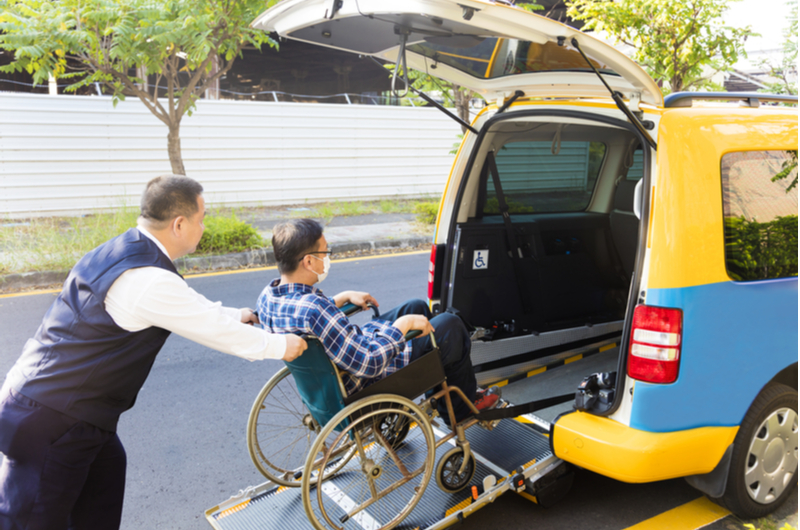Independent vs. Assisted Living: What To Know And How To Decide
Many seniors struggle with taking care of themselves as they get older. If you are getting ready to retire, you must decide whether you are able to remain independent or if you need help from an assisted living facility. There are multiple options for both independent and assisted living. Despite the name, there are independent living options where you still receive a small amount of assistance. Similarly, there are assisted living options where you still retain a great deal of freedom while receiving assistance from a caregiver. Listed below are several advantages and disadvantages associated with independent and assisted living facilities.

Retirement Communities
Retirement communities represent the freest form of independent living. Retirement communities are neighborhoods of other independent seniors. The majority of retirement communities are either apartment complexes or condos, though there are also some collection of homes which qualify as a retirement community. Most retirement communities have a minimum age of 55, but some communities raise this as high as 60 or 62.
In a retirement community, you are responsible for maintain your home. Some services are provided to the community, such as ground maintenance. If you live in a colder climate, plowing and snow shoveling are included in ground maintenance. These communities normally feature community facilities, such as a pool, tennis courts, gyms and access to transportation services. Larger communities may even have restaurants. Some communities have a staff to help organize events throughout the years, but most leave any event organizing to the residents.
Some retirement communities are managed by a homeowners’ association. If you live in one of these communities, you must pay HOA fees, which the association uses to pay for facilities and upkeep costs. The association may also place additional rules on the retirement community, such as guest parking hours.
Senior Apartments
Senior apartments are similar to retirement communities, but there are more services available for seniors. Some apartments employ caregivers who work part time with residents to help with basic day to day needs. Otherwise, you are responsible for maintaining your home and setting your schedule. The main tasks performed by caregivers in senior apartments are helping out with basic housekeeping and making sure residents take their medication.
These facilities commonly have a community dining room, which is good for seniors who are unable to cook their own meals. Senior apartments also have more safety and security features than other independent living facilities. For example, some apartment complexes include a pull-cord alarm system, which you can use to alert staff of an emergency. Senior apartments often partner with other elder assistance programs, such as Meals on Wheels. These programs are not available to all residents by default, so you must sign up for assistance.
Low-Income Housing
One of the challenges for retiring seniors is keeping up with housing costs. Many seniors are unable to afford mortgage payments or property tax once they stop working. The Department of Housing and Urban Development (HUD) has several programs available to provide low-income homes for independent seniors. These facilities are similar to senior apartments, with the main difference being rent. In order to qualify, you must meet certain income requirements, which vary based on your state. Section 202 housing is intended for low-income seniors, while Section 811 housing is for seniors with disabilities.
Assisted Living Facilities
-
There are only two categories of assisted living facilities, basic and specialized facilities. The base assisted living facilities are staffed 24/7 with caregivers. Throughout the day, caregivers supervise and assist residents. Assisted living facilities are typically either apartment or condos. In a basic assisted living facility, you still own the home, but receive daily assistance from the facility caregivers.
-
Some of the tasks staff help with include managing medications, bathing, basic housework and meal preparation, transportation and getting dressed. Assisted living communities have many of the same facilities as senior retirement apartments. Basic assisted living facilities are more restrictive than independent living, but seniors still have a fair amount of freedom. The biggest difference is residents must base their schedules around the caregivers.
Skilled Nursing Facilities (SNF)
The other type of assisted living option is a SNF, with the most common example being a nursing home. SNFs provide the least freedom to seniors, but offer the most extensive care. Caregivers and medical staff are available around the clock. The staff has a greater role in taking care of residents. Everything is scheduled in advance for residents. SNFs are reserved for seniors who are unable to take care of themselves, typically because of a medical condition or illness, with dementia and Alzheimer’s being the most common.
Because SNFs require the most advanced care, it is often the most expensive option for seniors. However, many insurance plans, including Medicaid and Medicare, have options to cover assisted living costs. Medicare normally covers short term care, while Medicaid has advanced options for long-term assistance.



